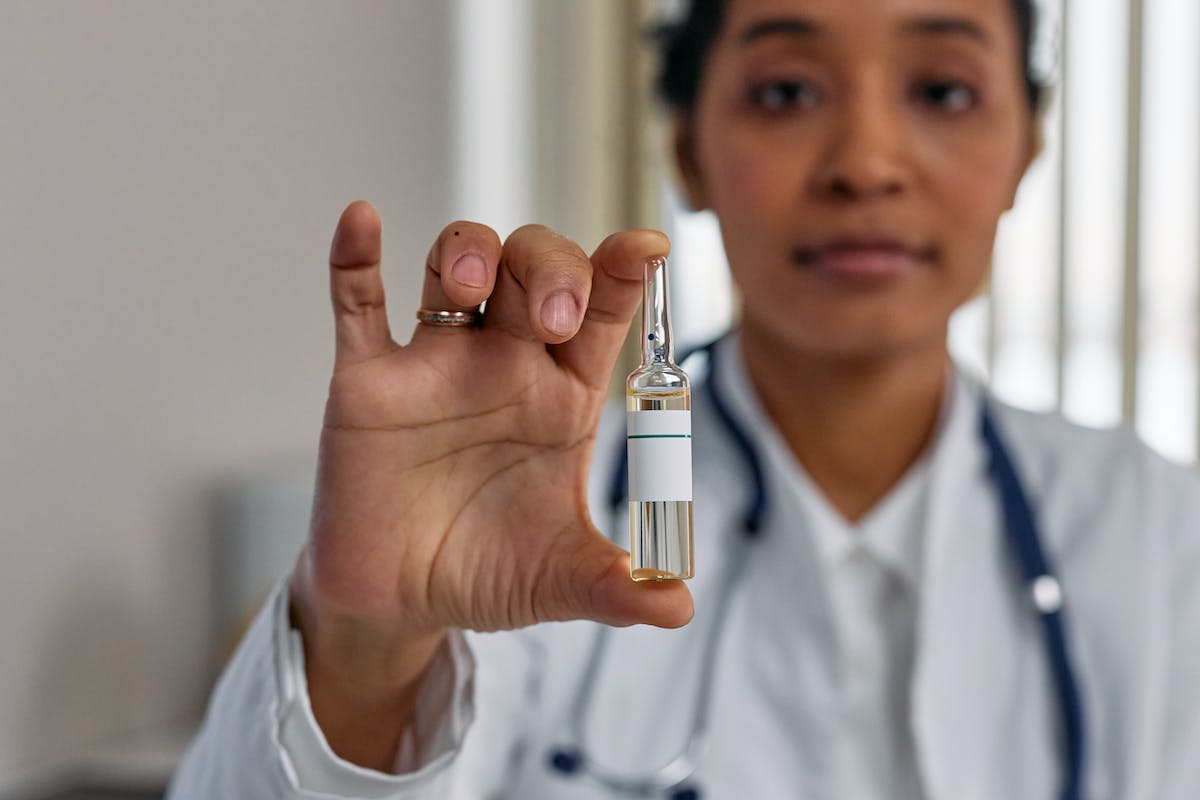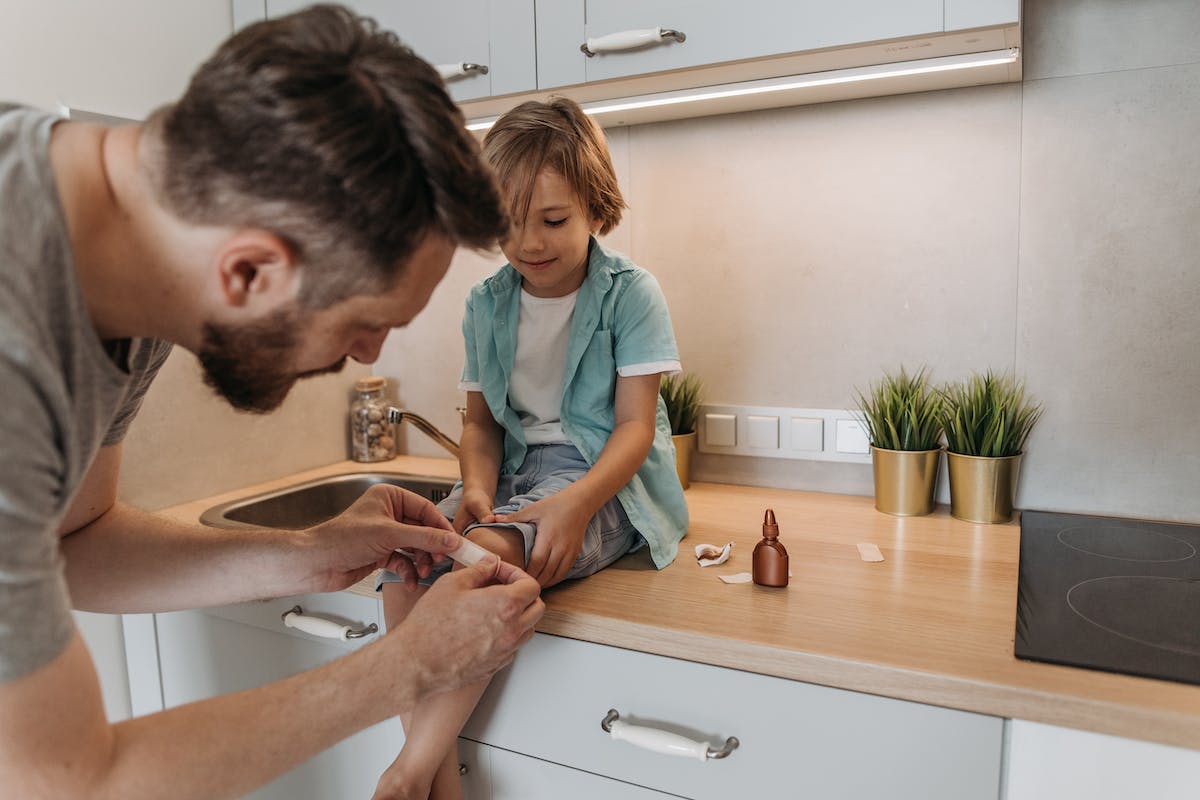As we navigate through life’s various stages, our bodies endure an extensive amount of wear and tear, especially in our musculoskeletal system – a complex network of bones, joints, ligaments, tendons, muscles, and nerves. Regular orthopedic checkups play an instrumental role in maintaining our overall health and well-being, yet their importance often remains overlooked. These evaluations are not merely for individuals who have sustained an injury or undergone surgery; they are crucial for everyone, regardless of age or physical condition. By providing early detection of potential musculoskeletal conditions, preventing the progression of serious disorders, and monitoring the status of pre-existing issues, these consultations can dramatically influence one’s quality of life. In the following discourse, we will explore the multifaceted significance of regular orthopedic checkups, and how they contribute to a healthier, more active lifestyle.
Understanding Orthopedic Health
To comprehend orthopedic health, one must first understand that it encompasses an extensive range of conditions and treatments related to the musculoskeletal system, which includes bones, joints, ligaments, tendons, muscles, and nerves. This intricate system, fundamental to our mobility and overall well-being, can be profoundly affected by factors such as diet, physical activity, and aging.
Orthopedic nutrition is a critical aspect of maintaining and enhancing this system’s health. Proper nutrition provides the necessary vitamins, minerals, and nutrients needed for bone health, muscle growth, and tendon and ligament strength. A well-balanced diet can prevent or manage conditions such as osteoporosis, arthritis, and muscle atrophy.
Simultaneously, technological advancements have revolutionized orthopedic health. From imaging techniques that allow for precise diagnosis to minimally invasive surgeries that reduce recovery time, technology has improved the quality of care and outcomes for patients. Furthermore, the development of technologically advanced prosthetics and implants has provided new possibilities for those with severe orthopedic conditions.
The Role of Orthopedic Checkups
Orthopedic checkups play a crucial role in maintaining the health of your musculoskeletal system. They provide a comprehensive means for the early identification of bone disorders and conditions that could, if left unattended, result in serious health complications. Furthermore, these regular assessments can aid in the prevention of musculoskeletal injuries, ensuring that your mobility and quality of life are preserved.
Identifying Bone Disorders
Through regular orthopedic checkups, potential bone disorders can be promptly identified and effectively managed, thereby mitigating the risk of further complications. These checkups often involve the assessment of bone density and joint lubrication, two critical components of a healthy musculoskeletal system.
Orthopedic checkups may aid in identifying:
- Osteoporosis, a condition characterized by low bone density, increasing the risk of fractures.
- Arthritis, a joint disorder affecting lubrication and causing painful inflammation.
- Bone cancers, which may present with symptoms like pain or swelling.
- Degenerative diseases like osteoarthritis, which can cause joint pain and stiffness.
Each of these conditions can significantly impact quality of life, but early detection through regular orthopedic checkups allows for prompt and effective treatment strategies.
Preventing Musculoskeletal Injuries
While often overlooked, regular orthopedic checkups play a pivotal role in the prevention of musculoskeletal injuries by detecting early signs of issues that may lead to injury if left unaddressed. These checkups include assessments of workplace ergonomics, which can pinpoint potential hazards and reduce the risk of injury. An orthopedic examination can identify improper body mechanics or postures that may lead to musculoskeletal strain over time. Additionally, these checkups are essential in injury rehabilitation. They provide a roadmap for recovery, helping patients regain strength and function, while also preventing re-injury. In essence, regular orthopedic checkups offer a proactive approach to maintaining musculoskeletal health, emphasizing prevention over treatment.
Early Detection of Musculoskeletal Conditions
Regular orthopedic checkups play a pivotal role in the early detection of musculoskeletal conditions, which can range from common ailments such as osteoporosis and arthritis to more complex disorders. Notably, early detection offers a multitude of benefits, including timely intervention, better management of symptoms, and improved patient outcomes. Furthermore, understanding these conditions allows for the implementation of preventive measures and treatments, thereby enhancing the overall quality of patient care.
Identifying Common Musculoskeletal Conditions
Early detection of musculoskeletal conditions often hinges on the understanding and recognition of their common signs and symptoms. With orthopedic technology advancements, it is now possible to accurately diagnose these conditions at an early stage. The role of nutrition cannot be overstated in maintaining overall musculoskeletal health and preventing the onset of these conditions. Regular checkups can help identify potential issues before they become chronic problems.
The following are common signs of musculoskeletal conditions:
- Persistent joint pain or stiffness
- Swelling in the joints or surrounding area
- Limited range of motion or functionality
- Visible deformities or irregularities in the shape of your joints
Benefits of Early Detection
Recognizing these common signs and symptoms of musculoskeletal conditions paves the way for appreciating the significant advantages of their early detection. With the aid of orthopedic technology advancements, precise and swift diagnosis is now possible. Early detection can lead to timely intervention, which can help to prevent disease progression, reduce pain, and improve quality of life. Moreover, it can prevent the need for more invasive treatments down the line, thereby bringing down medical costs. Hence, the economic implications of early detection are substantial, leading to cost savings for patients and the healthcare system. In summary, regular orthopedic check-ups facilitate early detection of musculoskeletal conditions, which has profound health and economic benefits.
Preventive Measures and Treatments
While the benefits of early detection are paramount, it is equally important to delve into the preventive measures and treatments that play an integral role in managing musculoskeletal conditions.
Advancements in orthopedic technology have transformed the landscape of preventive care and treatment options, leading to improved patient outcomes. Holistic orthopedic care, which considers the patient’s overall health and lifestyle, is also gaining traction. Here are some key measures and treatments:
- Regular physical exercise: Strengthens muscles and bones, reducing the risk of injury.
- Balanced diet: Ensures the body gets necessary nutrients for bone health.
- Orthopedic technology advancements: Include 3D printing for joint replacements, and robotic-assisted surgery.
- Holistic orthopedic care: Integrates traditional medical treatments with lifestyle modifications.
These measures can enhance early detection and effective management of musculoskeletal conditions.
Preventing Serious Orthopedic Disorders
Regular orthopedic checkups play a crucial role in the timely detection and prevention of serious orthopedic disorders, thereby safeguarding an individual’s quality of life. These check-ups provide a platform for clinicians to advise patients on the key aspects of orthopedic nutrition and recommend suitable rehabilitation exercises.
Orthopedic nutrition is a specialized field that focuses on dietary strategies to support bone and joint health. A balanced intake of essential nutrients like calcium, vitamin D, and protein is crucial in preserving bone density and promoting musculoskeletal wellness. Regular checkups allow clinicians to review the patient’s dietary habits, suggest necessary adjustments, and possibly prescribe nutritional supplements.
Rehabilitation exercises are equally important in preventing orthopedic disorders. These exercises, often designed by physical therapists, help to improve mobility, enhance muscle strength, and boost joint flexibility, consequently reducing the risk of injuries and degenerative diseases. Regular orthopedic checkups facilitate the design and adjustment of these exercise programs based on the patient’s evolving needs and progress.
Monitoring Progress of Existing Conditions
In the realm of orthopedic care, diligent monitoring of existing conditions serves as a significant preventive measure against potential complications and worsening of symptoms. Regular check-ups offer an avenue to track the progression of orthopedic conditions, thereby facilitating early intervention for any irregularities.
In the context of joint replacement progression, routine monitoring helps determine the lifespan and functionality of the prosthetic joint. In cases of osteoporosis management, periodic assessments can detect changes in bone density, enabling the modification of treatment plans as necessary.
Here are some crucial reasons why monitoring existing conditions is essential:
- Identifying the rate of progression of orthopedic conditions, such as arthritis or spinal disorders.
- Facilitating timely adjustments to treatment plans based on the individual’s response and progress.
- Tracking the functionality and durability of prosthetic joints after replacement surgeries.
- Proactively managing osteoporosis through regular bone density tests and medication adjustment.
Importance of Regular Checkups for Athletes
The importance of regular orthopedic checkups for athletes cannot be overstated. These appointments serve not only to detect potential injuries in their early stages, but also to enhance athletic performance by addressing minor physiological issues before they escalate. Moreover, frequent checkups can play a pivotal role in preventing future health complications, preserving the longevity and quality of an athlete’s career.
Detecting Athletic Injuries Early
Undeniably, early detection of athletic injuries through routine orthopedic examinations plays a pivotal role in preserving the long-term health and performance of athletes. These examinations are crucial in injury rehabilitation and performance optimization.
Early detection allows for:
- Expedited treatment plans, reducing the risk of further damage.
- Personalized rehabilitation programs to restore functionality.
- Performance optimization through targeted injury prevention strategies.
- Improved understanding of the athlete’s physical condition for better training adjustments.
In essence, regular orthopedic checkups enhance athletic performance by minimizing downtime from injuries, facilitating quicker recovery, and providing valuable insights into the athlete’s overall physical health. They are an investment in the athlete’s present capabilities and future potential.
Enhancing Performance Through Checkups
Building on the advantages of early injury detection, regular orthopedic checkups are not merely a preventative measure, but a catalyst for enhancing athletic performance. The integration of Orthopedic Technology Advancements in routine checkups has allowed for more precise diagnosis, facilitating tailored treatment plans that boost athletes’ physical capabilities.
Moreover, adopting Patient Education Strategies can play a significant role in performance enhancement. Educating athletes about injury prevention, proper body mechanics, and the importance of adhering to treatment regimens can significantly improve their overall performance. By promoting a comprehensive understanding of their orthopedic health, athletes can make informed decisions that favor their long-term performance and career longevity. Thus, regular orthopedic checkups serve not only as a preventative measure but also as a tool for athletic performance optimization.
Preventing Future Health Issues
Harnessing the power of regular orthopedic checkups, athletes can significantly reduce the risk of future health issues, aligning their physical well-being with their long-term career goals. Early detection and treatment of minor injuries can prevent them from escalating into more serious, potentially career-ending conditions.
Incorporating lifestyle modifications and leveraging orthopedic technology advancements, athletes can strengthen their bodies, improve performance, and extend their careers.
Key benefits include: – Identification and management of underlying issues before they become severe. – Personalized advice on lifestyle modifications, such as diet and exercise, to support overall bone and joint health. – Access to advanced orthopedic technology for accurate diagnosis and innovative treatments. – Regular monitoring of the athlete’s physical condition, ensuring optimal performance and preventing future health issues.
Orthopedic Checkups in Aging Population
A significant portion of the aging population can greatly benefit from regular orthopedic checkups, as these can aid in the early detection and management of age-related musculoskeletal conditions. Orthopedic technology advancements have played a pivotal role in this regard, enhancing diagnostic accuracy and therapeutic interventions.
Geriatric orthopedic care is a specialized field that focuses on the unique needs of the older adults. As the body ages, it becomes susceptible to various orthopedic conditions such as osteoporosis, arthritis, and lumbar spinal stenosis, among others. Regular checkups can help identify these issues early on, allowing for timely treatment and potentially preventing further health complications.
Furthermore, these checkups provide an opportunity to monitor the progress of existing conditions and adjust treatment plans accordingly. They serve as a platform for educating older adults about the importance of maintaining bone health, promoting physical activity, and implementing lifestyle changes to mitigate the impact of these conditions.
Pediatric Orthopedic Checkups
Just as with the aging population, isn’t it equally critical for children to undergo regular orthopedic checkups for the early detection and management of potential musculoskeletal issues? Indeed, pediatric orthopedic checkups are a fundamental aspect of ensuring a child’s healthy and normal growth and development.
Pediatric orthopedic checkups serve several purposes, including:
- Growth Monitoring: Regular checkups enable orthopedic doctors to monitor the child’s growth effectively. They can detect any abnormalities in the child’s musculoskeletal system that may hinder their normal growth.
- Mobility Assessment: Doctors assess the child’s mobility during these checkups. Any issues with gait, balance, or coordination can be detected and treated early.
- Injury Prevention: Regular checkups can help identify potential risk factors and implement preventive measures to avoid injuries.
- Early Intervention: If any developmental or growth issues are detected, early intervention can significantly improve the prognosis and prevent potential complications.
Impact of Lifestyle on Orthopedic Health
While regular checkups, particularly in children, are crucial for detecting and managing potential orthopedic issues, it’s equally important to recognize the significant role lifestyle plays in maintaining orthopedic health. Sedentary dangers are an often-overlooked risk factor for various orthopedic disorders. Inactivity can lead to muscle weakness and bone density loss, increasing the likelihood of injuries and disorders such as osteoporosis, arthritis, and back pain.
Modern lifestyle, characterized by prolonged sitting and inadequate physical activity, is a major contributor to these sedentary dangers. Therefore, a shift towards an active lifestyle is imperative for optimal orthopedic health. The impact of an active lifestyle on orthopedic health is multifold. Regular physical activity strengthens muscles, improves bone density, and enhances joint flexibility, significantly reducing the risk of orthopedic issues.
Furthermore, maintaining a healthy weight, a byproduct of an active lifestyle, reduces the stress on weight-bearing joints, thus preventing wear-and-tear injuries. Balanced nutrition, also part and parcel of a healthy lifestyle, provides essential nutrients for bone and muscle health.
Role of Orthopedic Checkups in Post-Surgery Recovery
Ensuring successful post-surgery recovery, regular orthopedic checkups serve as a critical tool for monitoring healing progress, identifying potential complications, and adjusting treatment plans as necessary. These visits provide a platform for the patient and physician to evaluate and strategize the most effective recovery pathway.
Orthopedic checkups in post-surgery recovery play a significant role in various ways:
- Monitoring healing progress: Regular checkups allow the orthopedic surgeon to assess the patient’s healing process, ensuring that the recovery is on track.
- Identifying potential complications: Regular visits help detect any possible complications early, allowing for prompt intervention and thus preventing further issues.
- Adjusting treatment plans: Depending on the healing progress, the orthopedic surgeon may need to adjust the treatment plan, including post surgery nutrition and rehabilitation exercises.
- Guidance on post surgery nutrition and rehabilitation exercises: The surgeon provides advice on nutritional needs and rehabilitation exercises to support and speed up recovery.
Through regular orthopedic checkups, patients receive personalized care tailored to their specific needs, promoting a faster and safer recovery period post-surgery. Regular checkups are therefore a critical aspect of orthopedic healthcare.
Encouraging Regular Orthopedic Visits
Promoting a culture of regular orthopedic visits is paramount in preventive healthcare, as these checkups can facilitate early detection of musculoskeletal conditions, monitor the effectiveness of ongoing treatments, and offer guidance on maintaining bone and joint health. This process, however, requires considerable effort and a long-term commitment to orthopedic education. Educating patients about the significance of these visits is key to ensuring their adherence to regular checkups.
The role of orthopedic education extends beyond informing patients; it also entails reframing misconceptions about orthopedic visits. Many patients mistakenly believe these visits are necessary only when faced with severe pain or debilitating conditions. To counter this, education needs to emphasize that regular visits can potentially prevent such situations from arising.
Moreover, orthopedic education should include clear, concise information about what patients can expect during their visits, the types of conditions that can be detected, and how early detection can lead to more successful treatments. Ultimately, encouraging regular orthopedic visits involves a continuous process of education, clear communication, and reframing misconceptions to promote an understanding of the importance of preventive orthopedic healthcare.
Frequently Asked Questions
What Should One Prepare or Bring During an Orthopedic Check-Up?
To prepare for an orthopedic check-up, one should bring medical history records to aid in diagnosis. Alleviate check-up anxiety by jotting down symptoms, questions, and concerns in advance to ensure a comprehensive consultation.
Are There Any Side Effects or Risks Associated With Regular Orthopedic Checkups?
Regular orthopedic checkups generally pose minimal risks. However, checkup anxiety may occur due to orthopedic misconceptions. It’s crucial to communicate openly with your orthopedist to ease fears and understand the benefits of these checkups.
How Long Does a Typical Orthopedic Check-Up Take?
A typical orthopedic check-up, influenced by individual health factors and orthopedic innovations, usually takes around 30-60 minutes. However, check-up frequency can impact duration, with initial visits often being longer than subsequent ones.
Can Regular Orthopedic Check-Ups Replace Physical Therapy Sessions for Certain Conditions?
No, regular orthopedic check-ups cannot replace physical therapy sessions for certain conditions. Orthopedic check-ups effectiveness lies in diagnosis and monitoring, while personalized treatment plans, including physical therapy, are crucial for comprehensive patient care and recovery.
What Is the Cost of Regular Orthopedic Checkups and Are They Usually Covered by Health Insurance?
The cost of regular orthopedic checkups varies, often negotiated by insurance providers. While many health insurance plans cover these checkups, out-of-pocket expenses may apply depending on individual policy details and deductible requirements.



